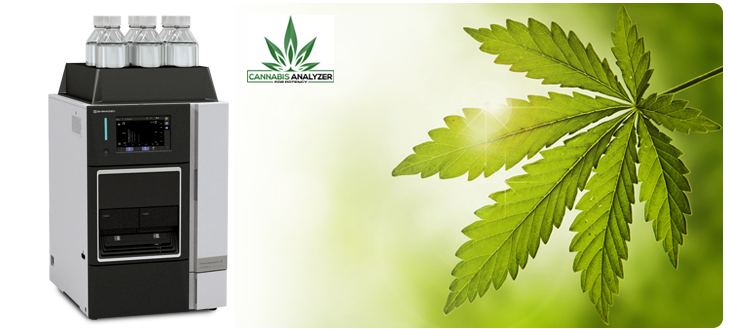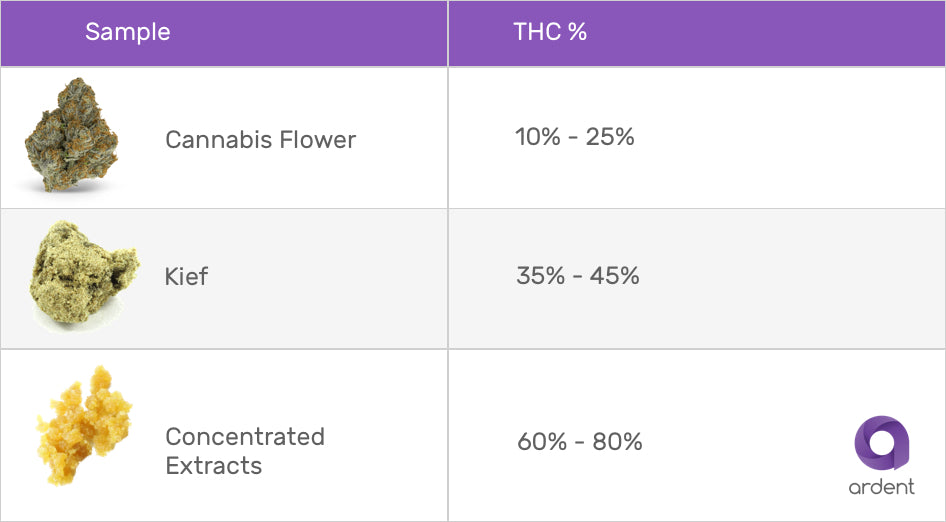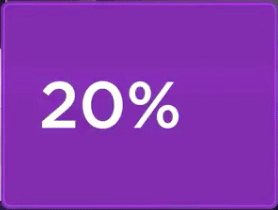Most Americans are familiar with the dosing procedures of OTC drugs like Tylenol or Aspirin. This familiarity allows them to self-medicate without speaking to a pharmacist. Few marijuana patients enjoy this security, though many of them may desperately need it.
Dosing is the most important aspect of any medical cannabis program. Whether your intention is to combat a rising tolerance, maintain precise blood levels through micro-dosing, or control a changing pain level throughout the day. Dosing is the variable that holds the key to success.
Accurate dosing is also one of the aspects of cannabis consumption that is the least understood.
As lab-quality cannabis products replace the dubious products of the cannabis fringe markets, the goal of reliable dosing has left the realms of eventual possibility and become something that even a casually educated home consumer can master.
This three step guide will tell you all you need to know to start getting the dose or serving size that you’re looking for, every time.*
PLEASE NOTE: This guide discusses the dosing of activated THC after the flower has been decarboxylated, not raw cannabis flower. In the raw plant, the THC is in its acid form, THCA. It must be properly decarbed to activate and utilize the THC.
How to Measure THC Content
1. Use a Lab for Measuring THC Levels
The most accurate way to know the exact chemical compounds present in your plant material is to get it tested at a lab via via High Performance Liquid Chromatography (HPLC). This time-intensive process can be done on as little as 0.1g of material, but many labs will require more to be able to get a truly accurate reading. This is the testing procedure used by many cannabis producers, extractors, and manufacturers who must verify the content of their products before they are made available for sale in medical and recreational cannabis legal states.

High-Performance Liquid Chromatography (HPLC) is a method of compound analysis that can identify and quantify the individual elements found within a sample. It is currently the gold standard in all fields which make use of analytical chemistry, including the cannabis industry.
Long term patients may be aware that HPLC replaced Gas Chromatography and Mass Spectrometry as the industry standard in cannabis lab testing. HPLC can identify both volatile and nonvolatile compounds present in a sample.
Among other things, this makes it a more accurate testing method, which is particularly important in an industry where unknown pesticides are regularly discovered. This is the sort of testing procedure available at your local lab. We highly encourage patients to seek out their local labs and get their material tested, particularly if they regularly consume the same strains from the same brands. This will help you determine how consistent their products are.
As always, never buy a cannabis product that does not come with an associated lab test. Most states require cannabis brands to include the lab test for the product right on the packaging. So be sure to look for that at the time of purchase. Ensure the cannabinoid content is consistent with the sale price and packaging. Also, look for purity and potency testing to ensure your product does not include any pesticides or unwanted ingredients.
2. Make an Educated Guess at Your Kief, Extract or Hash Dosage
As we mentioned in #1 above, if you get your cannabis from a dispensary, it will have lab testing results on the label indicating the potency of the flowe, keif or concentrate. Once you have this number, you can skip below to #3 and calculate your dose. But what if you don't have cannabis that comes with a lab test? You can still get a good range of how much THC is present by using this data: most cannabis flower has a THC level between 10-20%, with the average strain grown under good conditions coming in around 15-17%.
Kief and the related variations of hash tend to have a much greater THC percentage, coming in between 35-55%. Kief itself tends to be on the low end of this spectrum, while refined products like Bubble Hash tend to test towards the top.
Concentrated extracts like shatter, budder, and rosin tend to have even higher THC concentrations between 60-80%, sometimes more. Note that blonder concentrates tend to be stronger than darker concentrates, and more translucent products like sap and rosin are often stronger than more opaque products like budder and wax.

3. How To Calculate Your THC Dosage In Milligrams (Mg)
Once you know your THC %, we can do some simple math to calculate the milligrams (mg) of THC per gram.
Simply move the decimal in the THC percentage one place to the right. The resulting number reflects the milligrams of THC present in one gram of your material.

For Example:
- If your cannabis has a 20% THC count: 20% = 20.0
- Move the decimal one place to the right: 20.0 = 200
- So in this example, it would be 200 mg THC per gram
What Does This Mean for you?
Many patients who medicate throughout the day do so with a THC dosage of around 20 mg per dose. That said, it will depend on the patient and their tolerance as not all people will be able to start there. The best rule of thumb for medicating with cannabis edibles is to start low and go slow. If you've never tried an edible before, 5mg or below is probably a good place to start and work your way up from there. The 20mg dose previously mentioned would normally require a fairly high volume of cannabis if you are using imprecise decarboxylation or you are consuming your cannabis in inefficient ways.
For example, it is estimated that upwards of 70% of available THC is lost in the process of smoking cannabis in joint form.
With fully decarboxylated weed, a 20mg dose can be achieved with one-tenth of a gram of cannabis (assuming the starting material has a THC concentration of 20%). This is a very small amount of material that is easily managed.
This reduction in costs is life-changing for patients who have previously needed to use large amounts to get the same results. With small, effective doses it becomes easy to add cannabis into fun treats and regular meals, without ever having to worry about the overwhelming taste of marijuana.
Weighing to Get Your Decarbed Weed Dosage Right
Once you know the THC content of your material, proper dosing is as simple as weighing out the amount of plant material that contains the amount of THC you desire. Long term cannabis patients who are new to the process of total decarboxylation and using decarbed herb will be stunned to realize how little plant material they can consume with this new potency.
In many states where legal medical cannabis is sold, 100mg THC is the maximum dose size. This amount can be spread across several cookies or candies and therefore can be taken individually based on the consumer and their tolerance.
For Example:
- It is very common for professionally grown cannabis to reach THC levels of 20%
- Flower with 20% THC levels has a THC concentration of 200mg per gram
- This means that a patient who fully decarboxylates this material can achieve a standard medical dose using only 0.5g of plant material
Think about that. This means that a mere 1/2 gram of decarbed bud can produce about 200mg of THC for edibles. How much is a .5 gram of weed where you live? Most dispensaries, depending on the state and whether or not it is medical or recreational will charge between $10-$25 per gram. This means roughly $10-$25 for a single gram could turn into about 200mg per gram worth of edibles! How much would 200mg of edibles cost where you live? Most states range between $15-$40 for 100mg worth of edibles!
As always, the key to efficient dosing is total decarboxylation of whatever plant material you’ve chosen. For more details on decarboxylation and the role it plays in efficient THC usage, see our blog or contact us directly if you have questions.

34 comments
I lovev your mini teach-ins!
I have been using the NOVA to decarb flowers since it first came out, and have been able to enjoy a precise amount for my use each time by the method you describe. It’s the best way to enjoy my meds.
Thanks again.
Don
Thanks for this very informative piece. It cleared up many questions for me.
While I probably won’t send samples to a lab, I will use your very helpful estimates.
I usually employ a mix of “the bottom of the glass jar” materials and and generally know what the THC analysis is of the products I purchased. So, even though it’s a mix of varieties and, decarboxylated with your device…I’m a getting good eye for the measurements I should use.
I am grinding it, after decarboxylation, to the consistency of talc in a small food processor, then I add butter in the ratio of strength I want and mix it thoroughly. For baking and sautees it’s the best. Very handy. The butter protects the product from oxidation in the refrigerator or freezer and it loses no potency over time. It is best kept in a light proof tight sealing glass jar and seems to get stronger as the butter fat extracts more THC into the butter. It is invisable in any recipe
Love your device and appreciate the potency boost the process gives the product. Support, like your article, goes a long way towards customer loyalty
I am extremely pleased with my decarboxylating with your fine machine. I can now enjoy all the benefits of
Cannabis for my chronic pain (scoliosis and arthritis) without smoking or vaping. (My lungs thank you). I can
weigh and eat it with my breakfast or lunch take it with my daily vitamins (I call vitamin C ).
Get one, you’ll love it too. thanks Ardent.
My life has changed since trying Ardent NOVA. I am truly elated with the performance of this product. Thank God for Shanel’s experiences, determination and caring enough to spread the necessity of transforming health and wellness at an affordable price for everyone.
How long does it take to get my Ardent? Just ordered this week.
Thank you.